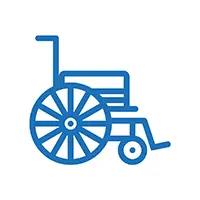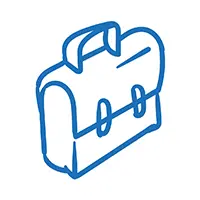Published 11 October 2019
A keen mountain biker who became paraplegic after an accident is using his experience to help other disabled cyclists get back on the track.
Liam Keenan, 22, became T4 paraplegic after crashing on a track in Queenstown in 2017.
The accident left him with a severed spinal cord, four broken ribs, two punctured lungs, and a snapped right shoulder blade.
But despite having no movement below his chest, Liam never entertained the thought that he would stop riding.
“After the accident, I never had a doubt that I would ride again. I was in hospital looking at ways that I was going to get back out riding.”

Liam on his adapted mountain bike (Photo supplied)
Building an adaptive mountain bike
There isn’t much of an adaptive mountain biking scene in New Zealand, Liam says.
That made it hard to find exactly the right kind of adaptive bike that would suit his needs.
With a typical kiwi can-do attitude, Liam decided to build his own using some of his experience as a bike mechanic.
“Before my injury I helped a guy down in Wanaka build some four-wheel adaptive bikes, so I was looking at doing one of those.”
In the end, he felt a four-wheeled bike would be too limiting, so he looked for ways to make the two-wheel bike work for him.
His inspiration was the British paraplegic mountain biker Martyn Ashton. He’d been a champion trail rider before an accident left him paralysed in 2015.
Martyn did what Liam wanted to do – adapt a two-wheel bike so he could ride it on the trails.
His solution was to attach a bucket seat to the frame. Liam thought that would work for him, too.
“It’s called a bucket bike. You take just a standard downhill bike. You mount a bucket seat onto it, and it’s got straps to hold you into it, seeing as how you won’t be able to sit on a normal seat.”
As well as being strapped in to the seat, Liam’s feet are also fixed to the pedals, which don’t move.
The bike also has a powerful 1500-watt motor, necessary for getting Liam up and down steep hills quickly.
He did a lot of the work on the bike himself, but he found help for some of the project.
“A friend of mine in America who had done it as well, he showed me which motor he used and everything.
“But apart from that I kind of worked it out by looking at what other people had done, and what I thought would work best for me.”

Liam's feet are attached to the pedals, which are fixed to the bike so they don't move (Photo supplied)
Getting back on the track
About 13 months after the accident, Liam was back on the trails.
He doesn’t get out nearly as much as he used to – a couple of times a month is normal these days - but he still loves it.
He lives in Auckland, not far from the Fourforty mountain bike park, named for its mammoth 440-metre vertical height.
He also rides tracks at Woodhill, Rotorua, and Nelson when he can.
Liam has recently added a trike to his inventory. Bought in Canada, it has a bigger motor and a fully articulating front end.
“That one I use for everything from walking the dog, to going down to the beach, to more extreme mountain biking.”

Liam getting ready to ride the tracks on his trike in Rotorua (Photo supplied)

Liam rides the tracks on his trike in Rotorua (Photo supplied)
Helping other disabled people get back out riding
“I’m always trying to get more people out riding,” Liam says.
“There’s a lady down in Wellington who I’m helping to build up a bucket bike at the moment.
“She broke her back four or five years ago mountain biking in Rotorua. She’s getting fairly close to having her one completed, which will be awesome.”
Liam supports other riders who’ve become disabled by sharing his knowledge of building his own bike.
“I’ll show them what I’ve been doing, send them the designs I’ve got, the list of parts I’ve used, basically just giving them all the advice or knowledge that I’ve got, just try to help them get their bike sorted so they can get out riding.”
Liam enjoys getting people out on the tracks using adaptive bikes.
“Last term I did a road trip from Auckland down to Queenstown. I rode the mountain bike track where I broke my back.
“That time I got four or five different people in wheelchairs out on my bike on the trails.”
Developing an adaptive mountain biking scene
Liam wants to build up the adaptive mountain biking scene in New Zealand.
“There really isn’t anything going on here at the moment.
“Even looking overseas to America, Australia and Canada, there’s a fairly good scene.
“Considering we’ve got some of the best mountain biking trails in the world, it’s a shame that no one else is really taking advantage of it, so I want to build that up.”
Liam also has some personal goals, including returning to the Crankworx mountain bike festival in Rotorua next year.
He’d love to get to Canada to ride in Crankworx Whistler, and to ride in the US Open of Mountain Biking in the adaptive category.














